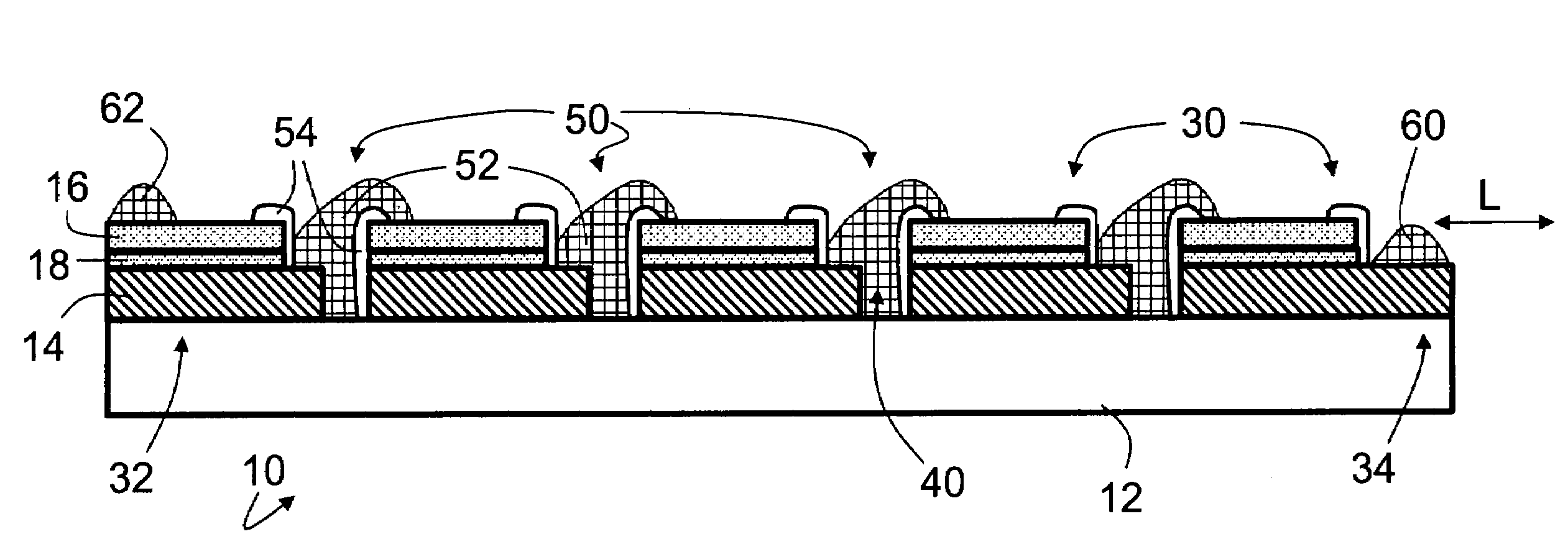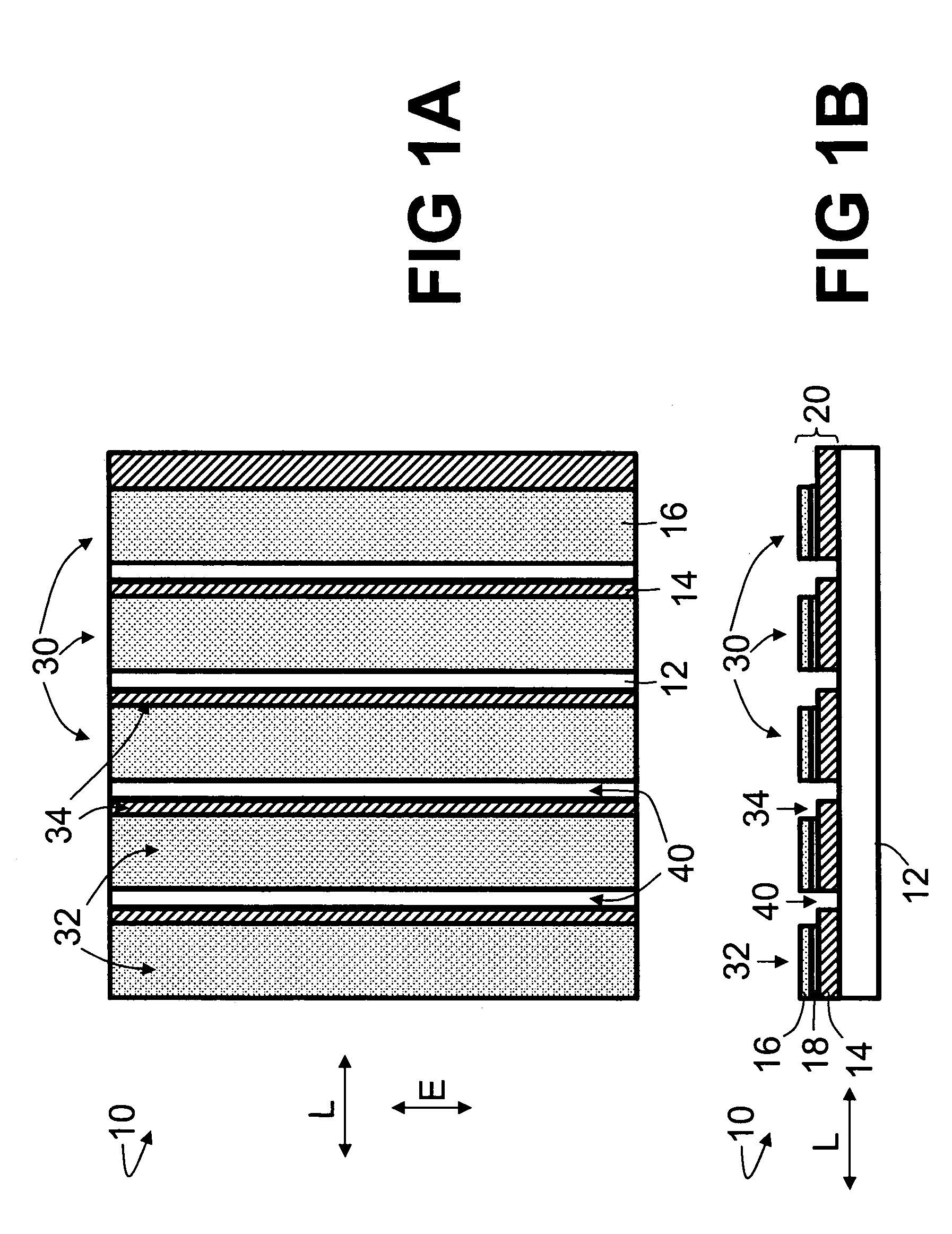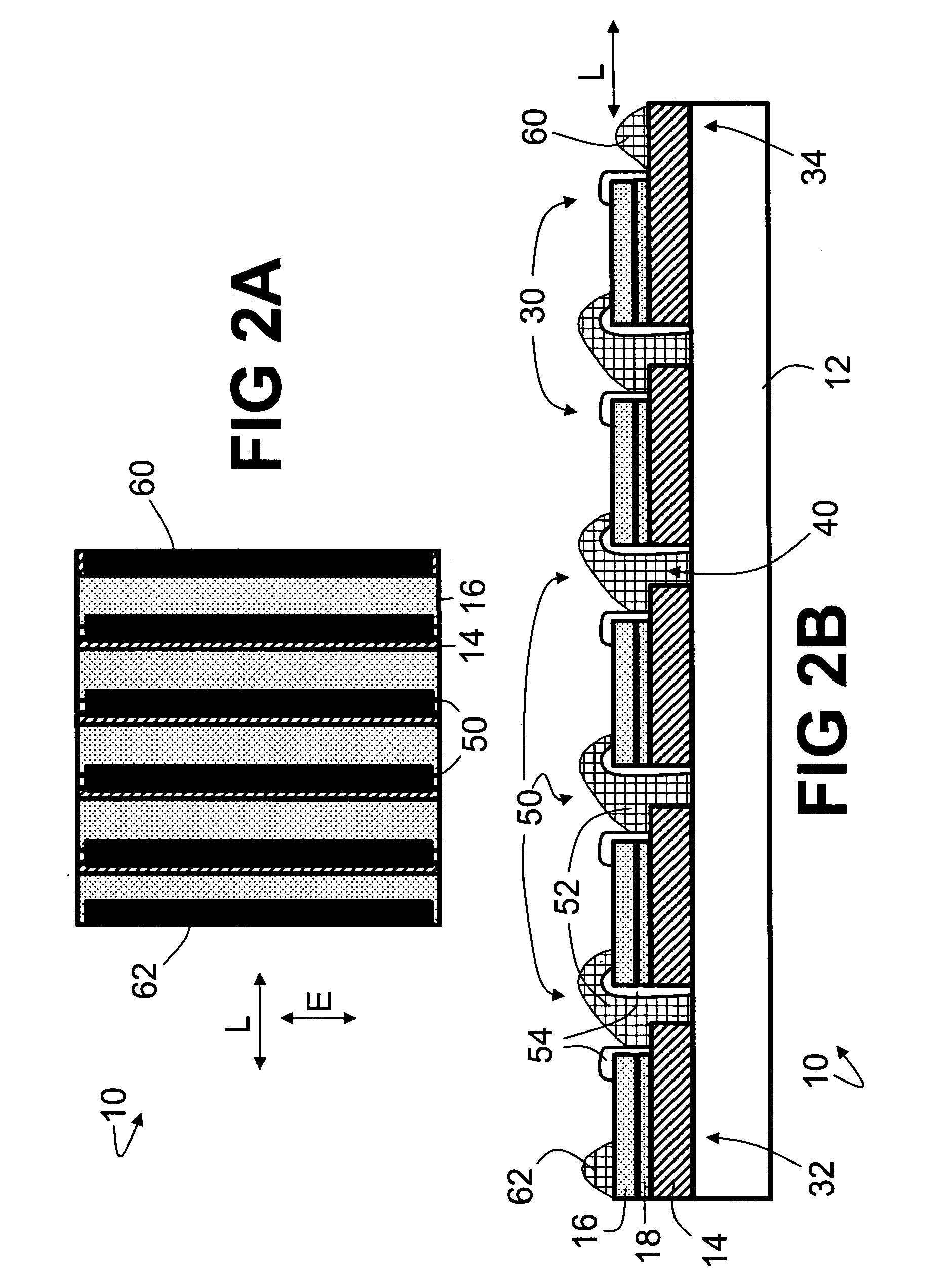LED with series-connected monolithically integrated mesas
a monolithic, series-connected technology, applied in the field of lighting arts, can solve the problems of reducing light conversion efficiency, reducing the efficiency of low voltage devices, and limiting the spatial separation between power sources and light emitting diodes, so as to achieve the effect of increasing system complexity
- Summary
- Abstract
- Description
- Claims
- Application Information
AI Technical Summary
Benefits of technology
Problems solved by technology
Method used
Image
Examples
Embodiment Construction
[0026]With reference to FIGS. 1A and 1B, a light emitting diode die 10 includes a substrate 12, a first conductivity type layer 14 disposed between the substrate 12 and a second conductivity type layer 16, and an active region 18 disposed between the first and second conductivity type layers 14, 16. The first and second conductivity type layers 14, 16 and the active region 18 are collectively referred to herein as a device layers stack 20. In one embodiment, the substrate 12 is a sapphire, silicon carbide, or gallium nitride substrate, and the device layers stack 20 is principally made up of group III-nitride layers such as gallium nitride layers, aluminum nitride layers, indium nitride layers, and ternary and quaternary compounds thereof. In another embodiment, the substrate 12 is gallium arsenide or indium phosphide, and the device layers stack 20 is principally made up of group III-arsenide and / or group III-phosphide layers. Other semiconductor materials can also be used for the ...
PUM
 Login to View More
Login to View More Abstract
Description
Claims
Application Information
 Login to View More
Login to View More - R&D
- Intellectual Property
- Life Sciences
- Materials
- Tech Scout
- Unparalleled Data Quality
- Higher Quality Content
- 60% Fewer Hallucinations
Browse by: Latest US Patents, China's latest patents, Technical Efficacy Thesaurus, Application Domain, Technology Topic, Popular Technical Reports.
© 2025 PatSnap. All rights reserved.Legal|Privacy policy|Modern Slavery Act Transparency Statement|Sitemap|About US| Contact US: help@patsnap.com



